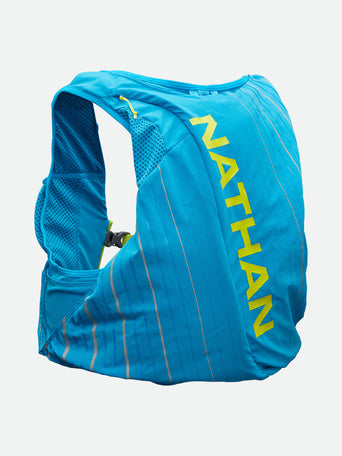By Ashley Arnold
Since I've lived in Colorado for several years now, I've grown accustomed to recreating, training and racing at high altitudes. In fact, the Leadville Trail 100-a 100-mile race that takes place at altitudes of 10,000 feet and above-is one of my favorite trail races of all time. I love the thin, crisp mountain air, the wide-open feeling of the Rocky Mountains, the dry air even. For all the beauty high altitude life offers, though, it can also be dangerous, especially if you're not used to it.
Because high altitude air is dryer and has lower air pressure (especially elevations of 8000 feet and above) moisture evaporates quickly from your skin. So, even when you're working hard and sweating profusely, you may have little visible sign of perspiration on your body. it's hard to actually tell how much water you're losing.
While this may make it hard to gauge your hydration levels, it also means you need more water to stay hydrated than you would at a lower altitude where the air is thick and humid. What's more, it also means that since you dehydrate more easily you are also at an increased risk of having an elevated heart rate because of less fluid in your bloodstream. All in all, if you're spending time at altitude, you'll be exhausted much faster and have a much harder time recovering.
And yet, training at altitude has long been a staple for elite endurance athletes. In fact, I recently read a statistic that 95 percent of all medalists at World Championship and Olympic events since the late 1960s have spent significant time training at altitude. If it's so hard to recover and hydrate properly, what's the point? Well, spending time up in the thin air increases your body's EPO and red blood cell levels in addition to raising your V02-Max to name a few good reasons. In short, altitude gives you an edge.
World class athlete or not, though, from a recreational perspective, experiencing high-altitude vistas and mountain-summit views is a miraculous-feeling experience you need to be healthy and hydrated to enjoy. And so, with summer in full swing, we present our top 5 tips for staying hydrated at altitude:
- Drink plenty of water on your way to altitude. While you are sitting at the airport, on the plane or riding in the car, drink water. You do not want to arrive already dehydrated. If you are trying to save trips to the restroom by skimping on liquid, don't.
- Ease into your activity. It is not wise or realistic to demand the same level of energy from your body at altitude that you experience at sea level. Allow your body time to acclimate and take more rest (and longer rest periods) than you are used to. Unless you're heading to altitude for a race, take it easy for about a week before incorporating harder efforts into your daily routine.
- Carry water wherever you go and drink often. Pay attention to your body's signals and perhaps drink a little more than you think you need. Never ignore your thirst. (A headache is a sign of dehydration.)
- Consume foods with high water content. If you feel like you cannot drink enough water, focus on consuming water lush fruits and vegetables.
- Avoid excessive amounts of caffeine. Caffeine is a diuretic and may inhibit your body's water absorption. Try to limit liquid intake to mostly plain water.
To view all of our hydration products, click here.
QuickStart 4L Race Pack

A minimalist pack that's perfect for shorter hikes, runs, or a walk around the neighborhood.
*Includes a 1.5L bladder.
TrailMix 7L Race Pack

A very versatile day pack with 7L of storage and pockets for snacks, extra layers, and your phone.
*Includes a 2L bladder.
TrailMix 12L Race Pack

Our largest capacity pack that's ready for any adventure. Hiking pole loops, roll top & more.
*Includes a 2L bladder.



Comments